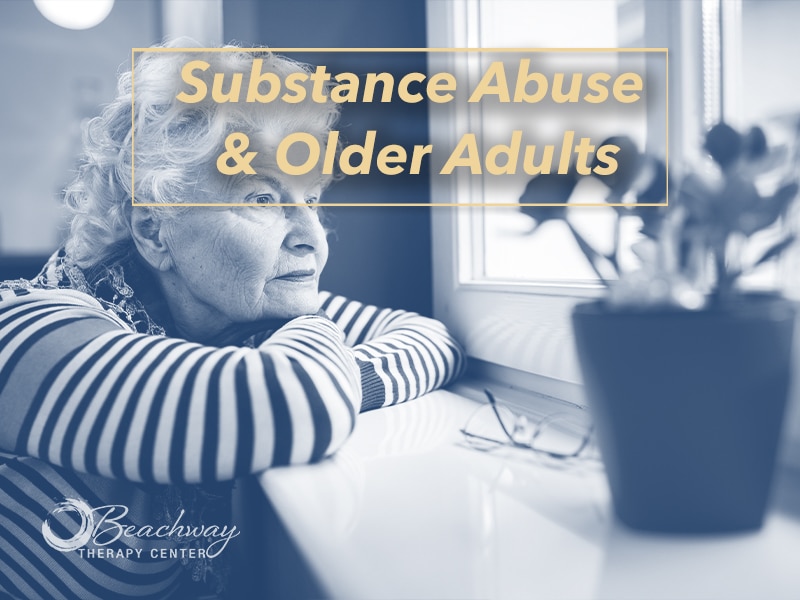
Substance Abuse and Older Adults
A Growing Threat: Substance Abuse Among Older Adults
In the United States, Substance abuse among older adults has been identified as one of the fastest-growing health problems. As the baby boomers – those born between 1946- 1964—age, substance abuse rates among older adults increases. The baby boomers were exposed to more drug use during the 60’s hippy culture and thus had been using drugs for longer than previous cohorts. Though alcohol is the most commonly abused substance among the older generations, there has also been an increase in the abuse of both prescriptions and other illicit drugs. There are limited statistics available relating to how many older adults struggle with substance abuse. Still, one study found in 2013, 2.8 million older adults were struggling with alcohol addiction, and they predicted this number to rise to 5.7 million by this year 2020. This rise in drug abuse among older adults will increase the need for support and treatment tailored for this population. Currently, addiction and drug abuse cost the United States $270 billion annually due to health care costs, lost workplace productivity, and crime-related costs.
Alcohol and drug abuse, particularly prescription medication abuse among the elderly (60 years and up), are rising in the United States. According to the National Institute of Alcohol Abuse and Alcoholism (NIAA), it is estimated that addiction influences up to 17% of adults over 60. It is predicted those suffering from addiction are underestimated and underdiagnosed, both major barriers to them getting the help they need. It is predicted that the number of older adults turning to alcohol and prescription drugs to cope with their emotional and mental health will continue to rise. This article will explore the risk factors that contribute to substance abuse among the elderly, along with preventative aspects and resources.

How Much Is Too Much?
The National Institute for Alcohol Abuse and Alcoholism, along with the American Geriatric Society, recommends that older adults consume no more than 7 standard drinks a week. They define at-risk drinking as more than three drinks on one occasion and/or more than seven drinks a week. They estimate that 10% of women and 16% of men are at-risk drinkers. They define binge drinkers as consuming five or more drinks in one drinking episode. They predict older adults’ binge drinking rates to be 19.6% for men and 6.3% for women.
The use of illicit substance abuse has increased with the baby boomers. A 2012 National Survey on Drug Use and Health found the rates doubled, jumping from1.9%-3.4% to 3.6% -7.2% among older adults between the ages of 50 and 65 using illicit drugs. It is estimated that this number has continued to rise. There is no recommended safe level of illicit drug use for older adults.
With the legalization of marijuana, there has been an increase in its use among older adults, both medicinally and recreational. The risks for older adults are that it can impair short-term memory, negatively impact the cardiovascular system, increases the chance of a heart attack, loss of mobility, and poorer physical functioning, putting them at greater risk of falling.
The elderly are more susceptible to the effects and negative health consequences of alcohol and prescription drugs because they have a reduced capacity to metabolize alcohol or drugs, increasing their brain’s sensitivity to them. This sensitivity can make it more dangerous for the elderly to use alcohol or prescriptions, even when they do not abuse them.
Older adults are also prescribed more medication than any other population. Therefore, they are at greater risk of drug dependency, misuse, abuse, and harmful drug interactions. Many older adults are taking 5 or more medications concurrently. Older adults have more access to psychiatric medications such as benzodiazepines, which are the most commonly prescribed psychiatric medicine to older adults despite warnings against this. Many older adults may not be trying to abuse drugs but may become dependent on prescripts due to them being overprescribed.

Challenges to Diagnose
When you picture someone struggling with addiction, you do not think of an older man who has just retired or a grey-haired grandmother. Unfortunately, doctors often misdiagnose or fail to assess substance abuse properly because they don’t see it either. The stereotypical image of a homeless person living under a bridge is no longer the reality of drug abuse. Whether or not we can see it or want to, this population is increasingly turning to alcohol and illicit drug use to help them cope with life’s challenges.
The symptoms of drugs and alcohol mimic a number the symptoms linked to other medical and mental health disorders, such as depression, diabetes, and dementia. Many doctors may also chalk up their symptoms to “old age.” Many individuals will minimize the amount they drink, making it harder for physicians to diagnose.
Some professionals may believe that the elderly have a right to use substances since they made it through life. Many professionals may not know how to ask an older adult if they are using illicit drugs and thus may fail to assess for this or believe it is not a problem as it would be for someone younger.

Prevention and Support
There is a call from the research community to provide more resources and support systems designed specifically for older adults. A national survey found that fewer than 18% of treatment centers were designed for older adults.
Research has shown that older adults who are seeking treatment do best when the therapists are genuine, kind, supportive, and non-confrontational. There is a lot of stigma and shame associated with seeking help for substance abuse, and older adults do better when they feel accepted and cared for. A barrier to seeking treatment for older adults is affordability, transpiration, geographical isolation, and still maintaining their lives while in treatment.
Support Groups: Self-help groups such as Alcoholics or Narcotics Anonymous can help reduce shame, stigma, and isolation that can accompany substance abuse for older adults. Some of these groups may not be well suited for older adults if younger polysubstance users occupy them. However, more elder-friendly meetings are appearing. Older adults must be encouraged to try a few different groups before deciding if it is a good fit for them; each group and meeting will have its own feel and tone.
Mobile Support: The baby-boomers are more technologically savvy than previous generations; therefore, online support may be an option. There is an expansion of online support, including access to counselors, support groups, and information to help with substance abuse.
Therapy: Treatment approaches such as Cognitive Behaviour Therapy (CBT), motivational interviewing, and other non-confrontational and supportive approaches help older adults overcome substance abuse.
The stigma, shame, and unawareness of substance abuse among older adults need to be addressed. We need to create a safe space for older adults to feel comfortable addressing their mental health challenges. There need to be more targeted supports and treatments to help prevent, educate, and treat older adults struggling with substance abuse.


